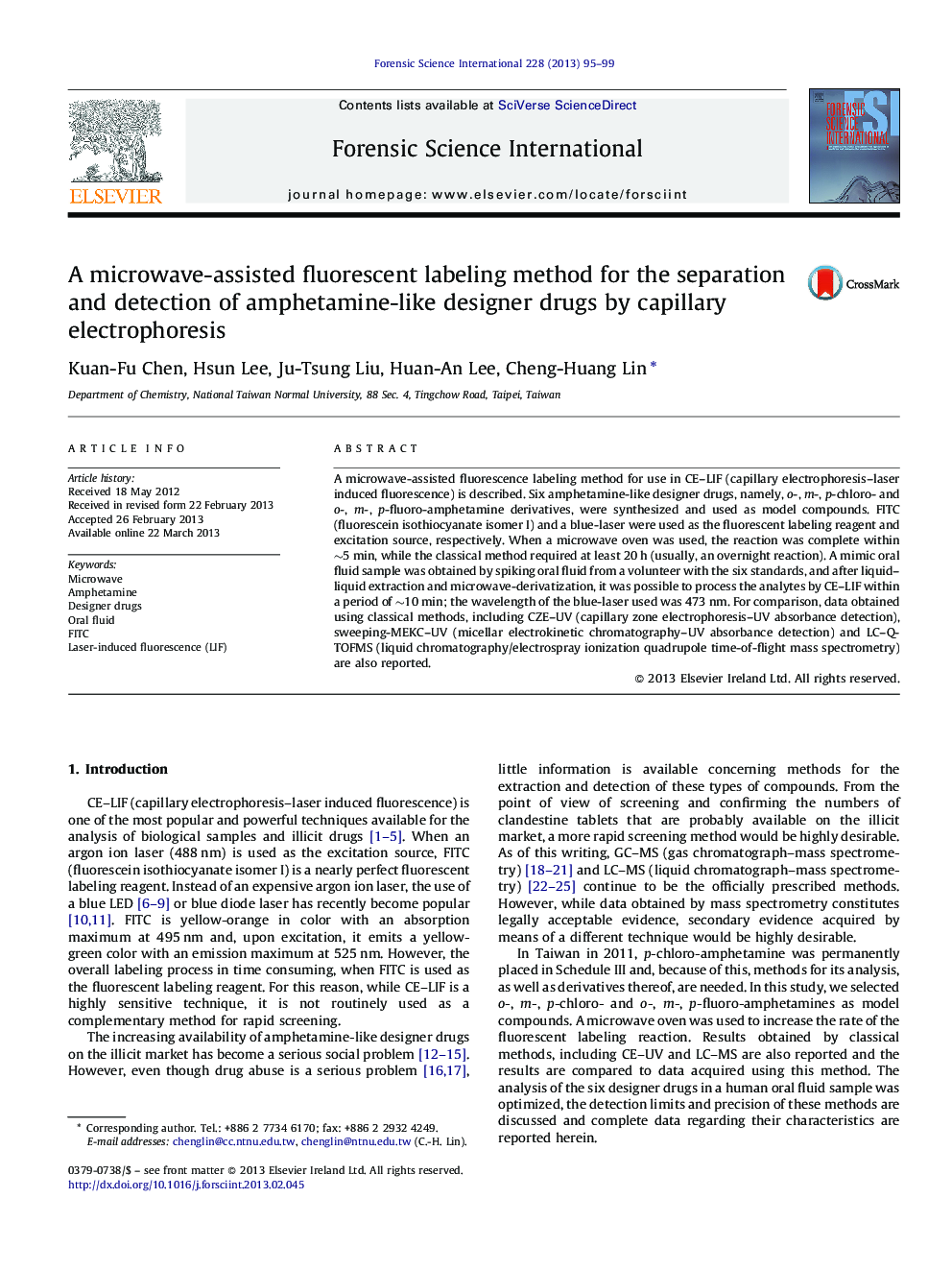| Article ID | Journal | Published Year | Pages | File Type |
|---|---|---|---|---|
| 96024 | Forensic Science International | 2013 | 5 Pages |
A microwave-assisted fluorescence labeling method for use in CE–LIF (capillary electrophoresis–laser induced fluorescence) is described. Six amphetamine-like designer drugs, namely, o-, m-, p-chloro- and o-, m-, p-fluoro-amphetamine derivatives, were synthesized and used as model compounds. FITC (fluorescein isothiocyanate isomer I) and a blue-laser were used as the fluorescent labeling reagent and excitation source, respectively. When a microwave oven was used, the reaction was complete within ∼5 min, while the classical method required at least 20 h (usually, an overnight reaction). A mimic oral fluid sample was obtained by spiking oral fluid from a volunteer with the six standards, and after liquid–liquid extraction and microwave-derivatization, it was possible to process the analytes by CE–LIF within a period of ∼10 min; the wavelength of the blue-laser used was 473 nm. For comparison, data obtained using classical methods, including CZE–UV (capillary zone electrophoresis–UV absorbance detection), sweeping-MEKC–UV (micellar electrokinetic chromatography–UV absorbance detection) and LC–Q-TOFMS (liquid chromatography/electrospray ionization quadrupole time-of-flight mass spectrometry) are also reported.
